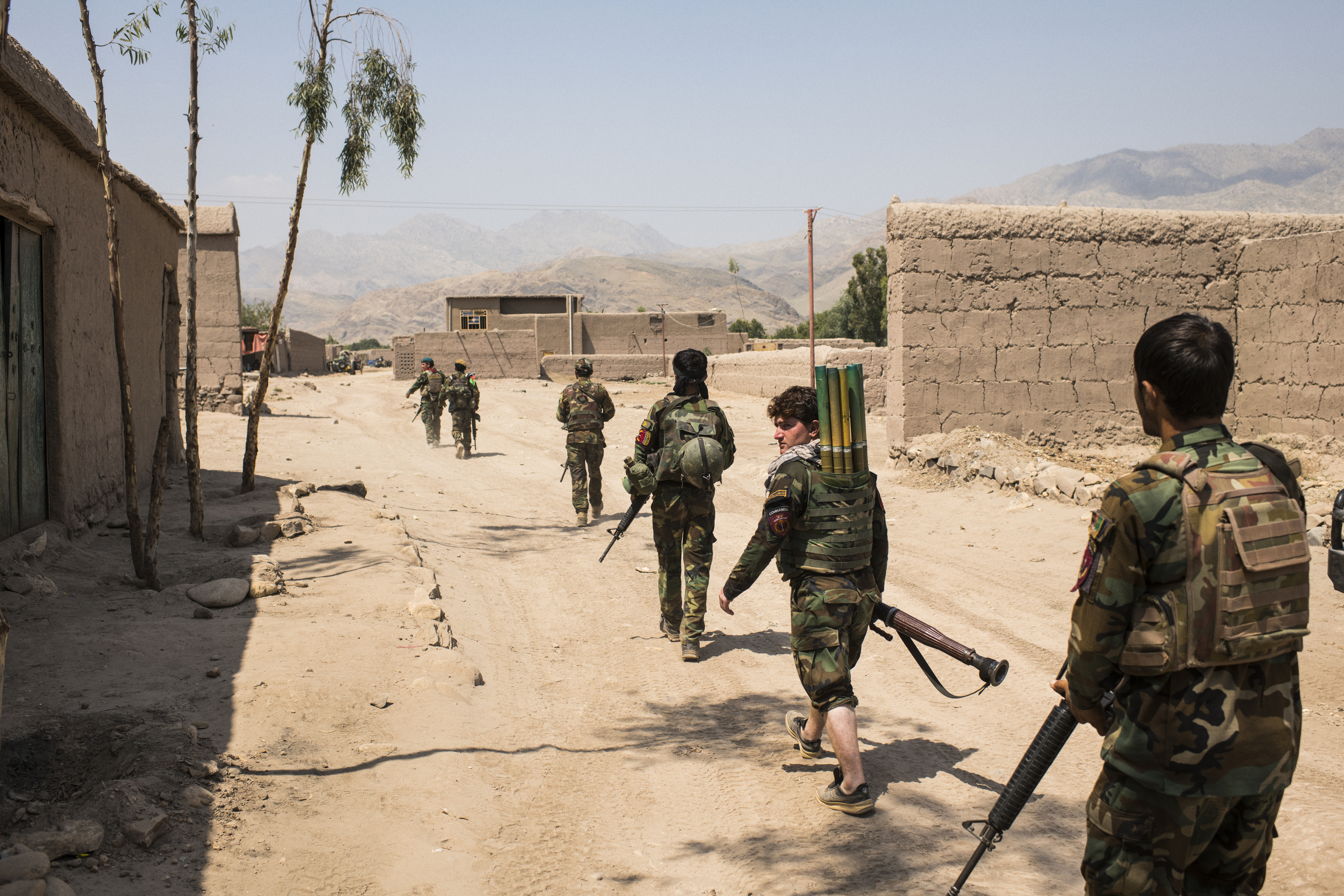 Afghan National Army soldiers set out during an operation in the village of Dasht-e Baghwani, in Nangrahar Province’s Surkh Rod District, to clear Taliban fighters from the area. Photo: Andrew Quilty, 2019.Drawing on interviews with key informants before and after the fall of Kabul and Sharan’s previous research on the role and power dynamics of Afghanistan’s political networks, this report examines the following:
Afghan National Army soldiers set out during an operation in the village of Dasht-e Baghwani, in Nangrahar Province’s Surkh Rod District, to clear Taliban fighters from the area. Photo: Andrew Quilty, 2019.Drawing on interviews with key informants before and after the fall of Kabul and Sharan’s previous research on the role and power dynamics of Afghanistan’s political networks, this report examines the following:
- The impact of the wholesale, 11th-hour restructuring of the top leadership at the Ministry of Interior and other security institutions at a time when the country faced formidable armed opposition, and the US was withdrawing, on the weakening, if not full breakdown, of chains of command and trust;
- How Ghani and his inner circle further politicised and ethnicised security institutions to their advantage. The ‘restructuring’ was couched as involving much-needed reforms to deal with very real problems of corruption and nepotism. However, it seems that changes to the senior leadership appeared to be driven by a desire to ‘clean’ the security sector of non-Pashtuns and promote Pashtuns, especially Ghilzai easterners, to shift the balance in favour of Ghani and his inner circle;
- Examines the strategic calculations and incentives of President Ghani and his inner circle for this last-minute restructuring and how others attempted to understand them;
- And finally, how the Palace’s decisions and actions undermined the ANSF’s capability and morale to counter Taliban offensives, as senior personnel were consumed by internal politics and job security rather than providing logistical and planning support to those fighting.
The article was published in Afghanistan Analysts Network


 On 15 August 2021, the Afghan government and large parts of the state, primarily the army and police, came tumbling down like a house of cards, leaving serious questions about the sudden melting away of Afghanistan’s security forces. Many factors contributed to the collapse of the security forces, including widespread corruption, lack of a combat strategy, poor war planning, the withdrawal of US-funded logistics and maintenance contractors and how the United States’ ‘peace’ strategy and then its decision to withdraw rapidly, completely and unconditionally had undermined morale. In this report, guest author Timor Sharan scrutinises the impact of domestic politics on the crumbling of the Afghanistan National Security Forces, particularly in the final months of Afghanistan’s ill-fated Republic. The report shines a light on how the politicisation and ethnicisation of the security forces by President Ashraf Ghani and his inner circle drove military failure and ultimately helped push the collapse of the ANSF and the Afghan state.
On 15 August 2021, the Afghan government and large parts of the state, primarily the army and police, came tumbling down like a house of cards, leaving serious questions about the sudden melting away of Afghanistan’s security forces. Many factors contributed to the collapse of the security forces, including widespread corruption, lack of a combat strategy, poor war planning, the withdrawal of US-funded logistics and maintenance contractors and how the United States’ ‘peace’ strategy and then its decision to withdraw rapidly, completely and unconditionally had undermined morale. In this report, guest author Timor Sharan scrutinises the impact of domestic politics on the crumbling of the Afghanistan National Security Forces, particularly in the final months of Afghanistan’s ill-fated Republic. The report shines a light on how the politicisation and ethnicisation of the security forces by President Ashraf Ghani and his inner circle drove military failure and ultimately helped push the collapse of the ANSF and the Afghan state.